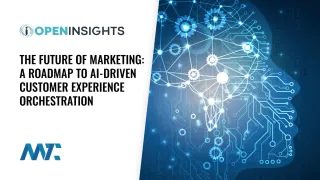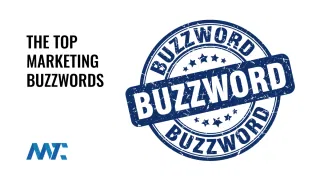From Disablement to Enablement: Building a Culture of Innovation

Organizations succeed or stall not just because of the products they build or the markets they pursue, but because of the cultures they foster. At the heart of culture is a choice:
Do we enable our people to innovate by removing roadblocks, or do we disable them with unnecessary barriers?
Enablement creates an environment where employees can explore, experiment, and collaborate to solve problems in ways that drive growth. Disablement, on the other hand, slowly erodes creativity, engagement, and progress. The tension between these two approaches is visible across every department, but it often comes into sharpest focus in the technology sector.
After decades of working with corporations large and small, I’ve seen more fail because they crushed enablement with top-down, heavy-handed control over employees, systems, and processes than anything else. Conversely, I’ve watched every organization that believed in hiring good talent and supporting them to move the organization forward.
The leaders in those successful organizations believed their job was to unleash the natural, innovative human spirit and productivity of their employees by removing their roadblocks… rather than paralyzing them through command-and-control.
A Story of Enablement
As a product manager in the marketing technology space, I lived through this tension. Our customers were primarily agencies across the industry, who heavily relied on Apple devices. Inside our organization, however, the standard issue was Microsoft hardware. While this made sense from a cost and support perspective, it left us disconnected from the way our customers experienced our software.
That changed when new leadership arrived, enabling us to choose the platforms that best suited our work. The product management team immediately ordered MacBook Pros, eager to use the product as our customers did. Very quickly, we ran into the same frustrations they had been facing. Suddenly, our roadmap shifted. We prioritized fixes that directly impacted the customer experience (CX).
The results spoke for themselves. We gained market share, outpaced competitors, and were ultimately acquired. None of that would have happened without the cultural shift from disablement to enablement. By enabling us to align with our customers’ reality, leadership unlocked insights that transformed the business.
Note: Enablement vs. Empowerment
Employees should always be equipped with the right tools, resources, and access to perform their jobs effectively. However, they are not always individually empowered, as empowerment carries responsibility and accountability for broader decisions that may need to be made by leaders or teams who oversee budgets, compliance, and organizational risk. In other words, enablement is universal, but empowerment is selective and situational.
Disablement as a Cultural Risk
Disablement doesn’t always come from malice or neglect. Often, it stems from a desire to minimize risk, enforce consistency, or protect the organization. But over time, disablement sends a dangerous message:
We don’t trust you.
That message manifests in countless ways:
- Policies that prevent teams from adopting tools that could improve efficiency.
- Rigid approval processes that slow down experimentation and creativity.
- A fear-based mindset where employees refrain from raising ideas because they anticipate rejection.
The cost of this culture is more than inefficiency. It’s disengagement, frustration, and ultimately, a lost opportunity. Talented employees seek out organizations that trust them to do their best work. Those who feel disabled will leave—or worse, stay and disengage.
At another organization where I worked, they had a sales leader who developed her own methodology for tracking, prioritizing, and engaging her prospects. Every quarter, she closed bigger and better opportunities than anyone else on the team. As the organization grew, they brought in a CRO from an enterprise company with the hopes that he would scale the company. He quickly brought in his proven systems, processes, and controls… which crushed her process.
She moved on to a competitor, sales plummeted, and the CRO eventually moved on.
Enablement as a Competitive Advantage
Enablement is not about saying yes to everything. It’s about shifting the posture of leadership and support functions from no to how:
- How can this be done securely?
- How can it scale?
- How can we channel this idea responsibly rather than smothering it?
- How can we support this?
When organizations embrace enablement, they create cultures where:
- Employees feel a sense of ownership over both problems and solutions.
- Experimentation is not punished but encouraged within clear boundaries.
- Risk is managed thoughtfully, rather than being used as a blanket excuse for inaction.
- Customers benefit because the organization is more closely aligned with their needs.
- Departments become partners rather than gatekeepers.
Early in my career, I had the pleasure of managing a large support team. We transitioned the team from being a department that closed support tickets to instead surveying their internal customers each quarter as part of their KPIs. The culture immediately transformed 1e mutual success.
Enablement builds trust, fosters loyalty, and unleashes innovation. In fast-moving markets, it is no longer optional. Departments shift from gatekeeping to breaking down barriers to serve their fellow employees and the organization.
An Enablement Bill of Rights
Just as freedom needs to be protected at all costs within a country, it also needs to be guarded in organizations. This doesn’t mean it’s a free-for-all; every employee must be held accountable to goals that help the organization move forward.
To move from disablement to enablement, organizations can establish guiding principles that remind leaders and employees alike of the culture they aspire to build. Think of it as an Enablement Bill of Rights:
- The Right to the Best Tools: Employees should have access to the technology and resources that align with their role and the needs of customers.
- The Right to Collaboration: Cross-departmental barriers should be minimized to facilitate the free flow of ideas and solutions.
- The Right to Experiment: Teams should be encouraged to test new approaches in controlled environments without fear of punishment for failure.
- The Right to Growth: Professional development and exploration of new skills should be supported as part of the organization’s long-term success.
- The Right to Ownership: Employees should have a voice in how work is done and feel accountable for both successes and failures.
- The Right to Transparency: Decisions that impact enablement, such as tool restrictions or process changes, should be clearly and openly explained.
- The Right to Trust: Employees should be trusted to act in the best interest of the organization, with safeguards in place for exceptions rather than blanket limitations.
By embedding these rights into the culture, organizations send a powerful signal: we trust our people, we value innovation, and we are committed to enabling success.
The Future Belongs to Enablers
In a world overflowing with new tools, platforms, and ideas, the organizations that thrive will be those that enable their people rather than disable them. Enablement isn’t just an IT strategy—it’s a cultural imperative. By shifting from control to trust, from restriction to enablement, organizations create the conditions for innovation, engagement, and long-term growth.







